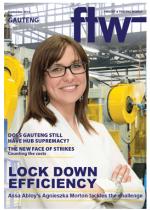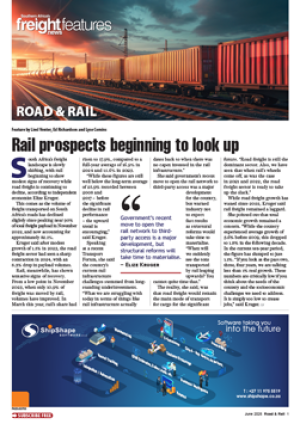Changing the minds of
decision-makers – mostly
based in Gauteng – is not
easy, but there’s a growing
realisation of the benefits an
alternative port and trade corridor
bring.
“Gauteng shippers are used to
doing business the way they always
have and change is not always
perceived as a positive but more as a
threat,” says Siobhan Fox, business
development manager South Africa
for the Walvis Bay Corridor Group.
But it is a growing market, times
are changing and a new approach is
looming.
“There are many opportunities
to take advantage of in the market,”
says Fox. “Buying and selling
influences are constantly looking
at best practice, efficient supply
chain solutions and alternative
gateways into the Southern African
Development Community (SADC).”
She says now is the time
for decision-makers to
consider alternative trade routes,
corridors and ports.
“And our core focus is to present
Walvis Bay not only as an alternative
but to show that it is a viable
option that can benefit business in
Gauteng,” she explains.
Established in 2000 to increase
cargo for ports and corridors linked
to it, and to engage in the facilitation
of corridor and infrastructure
development, WBCG has worked
tirelessly to market the Namibian
option.
It offers an integrated system of
well-maintained tarred roads and
rail networks – accommodating
all modes of transport – from
the Port of Walvis Bay via the
Trans-Kalahari, Trans-Caprivi,
Trans-Cunene and Trans-Oranje
Corridors, providing landlocked
SADC countries access to the global
market. But it is the current port
developments at the Port of Walvis
Bay that have grabbed the attention
of Gauteng.
“Namibia is busy developing
itself as a logistics hub for southern
Africa and business decision-makers
in Gauteng should explore this
option for the Gauteng region and
the rest of the SADC region. We
believe that in terms of heavy traffic
flow, extended transit time and
congestion, an alternative route and
port are definitely an option.”
INSERT & CAPTION
Gauteng is used to doing
business the way they
always have in the past
and change is often
perceived as a threat.
– Siobhan Fox

